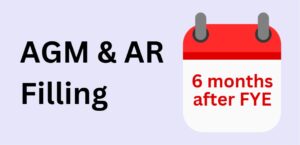- Start New Company
- Secretarial
- Other Solution
- Resources
System Guide

- FAST
- Start New Company
- Secretarial
- Other Solution
- Resources
System Guide

- FAST


Accounting and Corporate Regulatory Authority (ACRA)
Audited Financial Statement
Annual General Meeting (AGM)
Annual Report (AR)
Articles of Association
Apostille
BizFile
Business Grants Portal
Business Visa For Singapore
Business Profile
Central Provident Fund (CPF)
Certificate Of Residence (COR)
Common Reporting Standard
Common Seal
Companies Act (Cap. 50)
Company Constitution
Company Secretary
Company Stamp
CorpPass
Declaration of Solvency
Dependant’s Pass
Directors’ Resolution in Writing (DRIW)
Dividend
Dormant Company
Double Taxation Agreement (DTA)
Due Diligence
Electronic Register of Members (eROM)
Employment Pass (EP)
EntrePass
Enterprise Development Grant (EDG)
Estimated Chargeable Income (ECI)
Exempt Private Company (EPC)
Financial Year End (FYE)
Form 45
Form C-S/ C
Form C-S (Lite)
Fund Accounting
General Partnership
Goods and Services Tax (GST)
GovTech
Import/Export License
Income Tax
Initial Public Offering (IPO)
Inland Revenue Authority of Singapore (IRAS)
Intellectual Property Office of Singapore (IPOS)
Interim Dividend
IR21 Form
IR8A Form
Know Your Customer (KYC)
Knowledge Capital
Letter of Consent (LOC)
Limited Liability Company (LLC)
Limited Liability Partnership (LLP)
Limited Partnership (LP)
Liquidation (Court Order/Compulsory)
Liquidation (Voluntary)
Long Term Visit Pass (LTVP)
Nominee Director
Nominee Shareholder
National Registration Identity Card (NIRC)
Notice of Assessment (NOA)
Partnership
Personal Data Protection Act (PDPA)
Personalised Employment Pass (PEP)
Private limited company
Productivity Solutions Grant (PSG)
Permanent Resident (PR)
Register of Charges
Register of Nominee Director
Register of Registrable Controllers (RORC)
Registered Office Address
S Pass
Share
SingPass
Small Company
Sole Proprietor
Special Employment Credit
Sponsored Employment Pass
Striking Off
Trademark
Temporary Bridging Loan
Temporary Employment Credit (TEC)
UEN
Unaudited financial statement
Undischarged Bankrupt
Variable Capital Company (VCC)
Venture Capitalist (VC)
Wage Credit Scheme
Withholding Tax (Section 45)
111 North Bridge Road, Peninsula
Plaza #20-04/05, Singapore 179098
Main Line: (65) 6631 9890
Accounting: (65) 6631 9892
AGENT:FA20190812
Privacy policy © Copyright 2023. Heysara Pte. Ltd. All Rights Reserved.